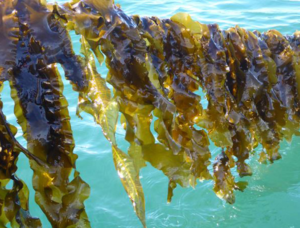The Current State of Seaweed: Part 1
When we talk about aquaculture, we often forget to discuss aquatic plants, particularly seaweed.
Seaweed is an essential part of the aquaculture industry and continues to rise in importance every year.
Global aquatic plant production more than doubled between 2000 and 2014 to a total of 27.31 million tons, wet-weight (1). For perspective, that weighs more than one-quarter of the milk produced in the United States or more than one-third of global apple production (2). The sheer mass of aquatic plants produced is not the only measure of success: The aquatic plant industry in 2014 was worth an estimated $5.6 billion, according to the United Nations’ Food and Agriculture Organization (FAO) (1).

Aquatic plant farming, overwhelmingly seaweeds, is now practiced in about 50 countries (1). Farming can now produce more than 90 percent of the market’s demand, with that demand growing each year (3). In 2014, China alone produced 13.3 million tons of aquatic plants, 96 percent of which (12.8 million tons) was seaweed (4). Overall, China produces 54 percent of total global production of seaweed (4), yet it is still one of the leading importers of aquatic plants, along with Japan and the United States (1). Indonesia, Chile and the Republic of Korea are the major exporters.
Seaweed for human consumption represents approximately $5 billion of the plant’s total value (3). Seaweed has been a staple food in the human diet since prehistoric times, notably in eastern Asian counties such as China, Japan and The Republic of Korea (5). In recent years, western countries have found a renewed interest in the use of seaweeds in culinary dishes. Ireland and France have reintroduced seaweed into the European market and regions like California and Hawaii have brought seaweed dishes, both traditional and new, to the United States (3). As a healthy and environmentally friendly option, the rising consumption of seaweed is expected to be fully embraced by consumers (3).
The seaweed and other aquatic plants not used for human consumption are used to produce fertilizer, feed, fuel and hydrocolloids for cosmetics (3). The common hydrocolloids produced are alginate, agar and carrageenan, which are used as thickening and gelling agents (3). When cosmetic products indicate they contain marine extract or seaweed extract, it means a hydrocolloid has been added. In 2013, world hydrocolloid sales were worth $1.2 billion (6).
The seaweed industry is rapidly growing and shows no signs of slowing down. It’s a plant that’s good for the economy and good for our environment.
Keep an eye out; the future of seaweed is bright.
This post was created by GAA Summer 2017 Intern Tyler Work.




